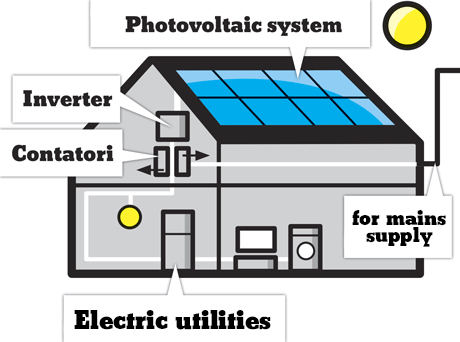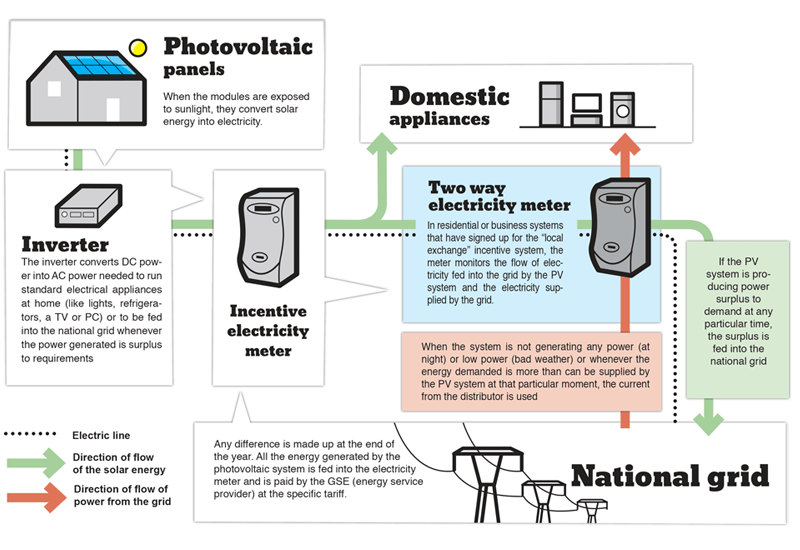Max Lux designs and installs a full range of photovoltaic systems, designed to cater for the customerís specific demands, including a feasibility study and an estimate of the systemís performance over the years.
Turnkey formula:
From the design of the system to managing the installation on site, support for the preparation of documents for submission to local authorities and GSE (Gestore Servizi Energetici) to access tax incentives schemes and the final testing and commissioning of the photovoltaic system.
WHY CHOOSE A PHOTOVOLTAIC SYSTEM?
To save the environment and protect human health
- No CO2 or other greenhouse gases released into the atmosphere. All other non-renewable energy sources are responsible for polluting the environment, ranging from the 450 kg of greenhouse gases produced every year for each kWh of power generated by natural gas up to 1,372 kg generated by coal.
- Minimum or zero impact on the environment. Depending on the type of system, the impact on the environment can be practically zero, especially for fully-integrated systems.L’impianto fotovoltaico non produce residui dal suo funzionamento ed a fine vita i moduli sono rigenerabili.
- Running a photovoltaic system does not produce any waste and the PV modules can be regenerated at the end of their working life.
- No impact on human health. Using a solar panel has no risk or impact on human health.
- The sun is an infinite and constant source of energy, unlike coal, gas, oil or other sources that will run out sooner or later.
On request
- Can be insured against theft / vandalism (and production downtime).
- Easy power expansion
- The system can be dismounted and transferred elsewhere economically, without affecting its performance.
- Monitoring system, with a detailed analysis of production and operating anomalies to safeguard the performance and profitability of the system.
WHAT IS PHOTOVOLTAIC SYSTEM AND HOW DOES IT WORKS?
Grid-connected systems are connected in parallel to the mains electricity network and designed to feed the electricity they generate into the grid, like a small power plant capable of eliminating or reducing the energy demands of a public building, industry or private home.
Systems connected in parallel to the grid consist of a calculated surface area of?photovoltaic modules, that are connected together and supply a converter that transforms the power they produce to single-phase or three-phase to be fed into the grid.

A photovoltaic system is basically a small power station generating electricity. The owner of the system can put any unused areas that are exposed to sunlight to good use (like a roof, garden, carports or porches etc..) and produce their own electricity, saving on their energy bills and helping to protect the environment. Below. Designing a photovoltaic system.

